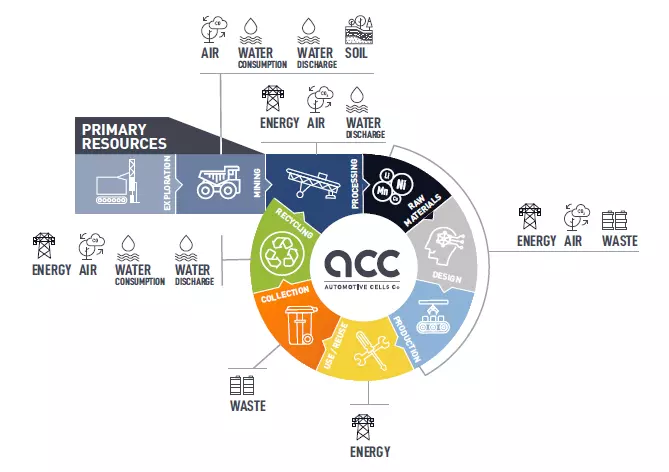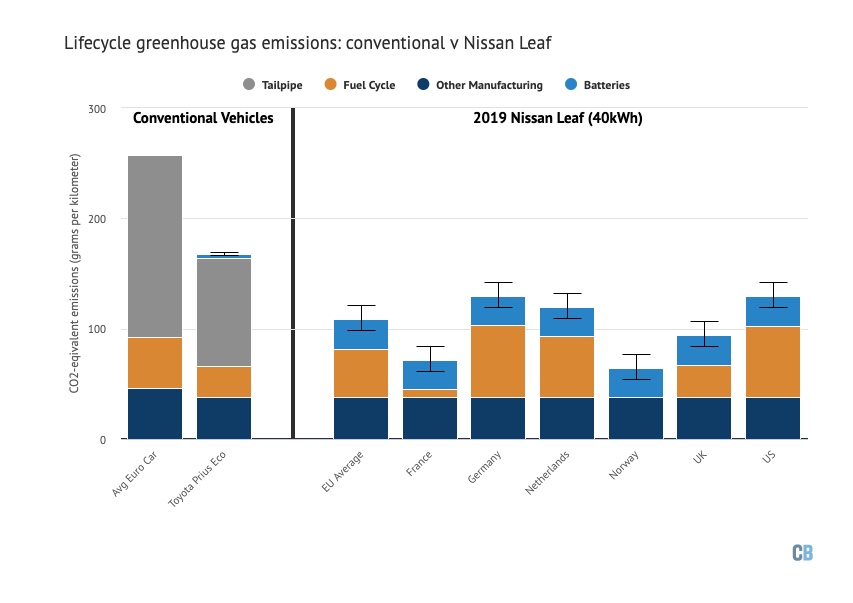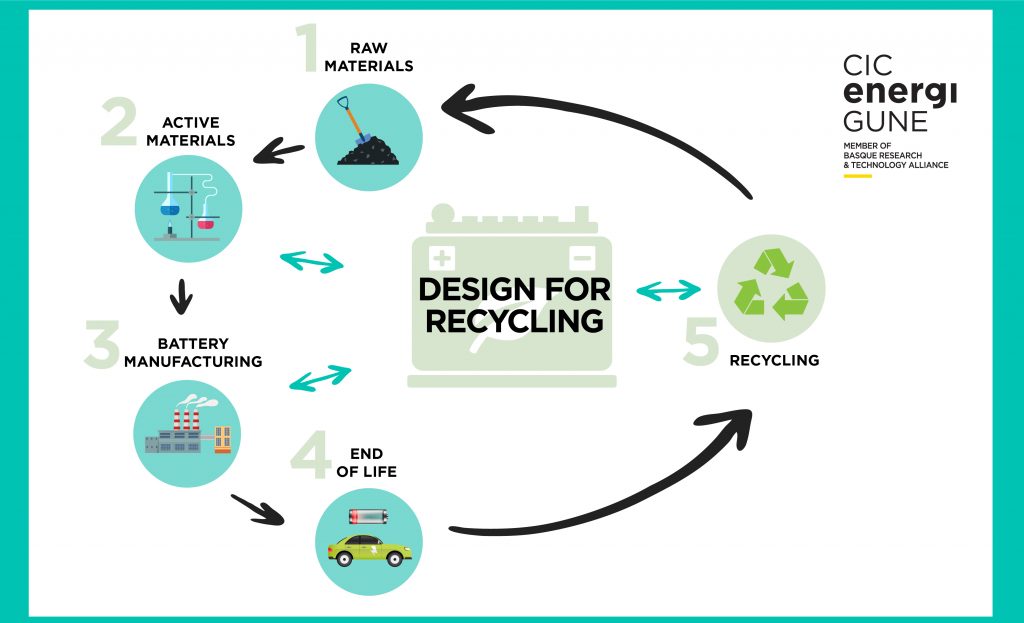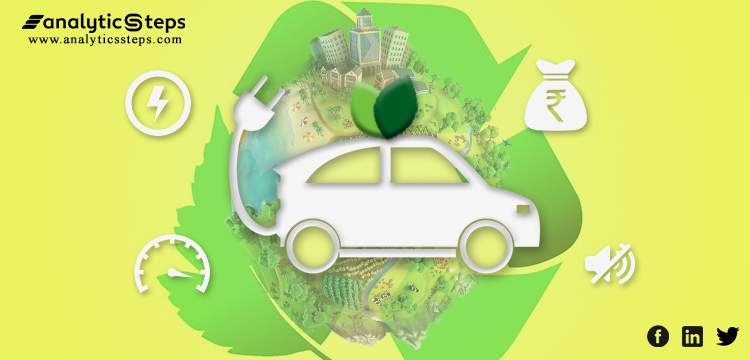Introduction:
Electric vehicles (EVs) are becoming an increasingly popular mode of transportation due to their many benefits, such as reduced fuel costs, lower emissions, and improved energy efficiency. However, as with any form of transportation, there are still environmental impacts associated with the production and use of EVs. In particular, the production and disposal of EV batteries can have significant environmental impacts. In this essay, we will explore the environmental impact of EV batteries, including the materials and energy required for their production, the impact of battery disposal and recycling, and the potential for innovation to reduce the environmental impact of EVs.
Environmental Impact of Car Battery Production:
Car batteries are an essential component of electric vehicle manufacturers (EVs) and their production has a significant environmental impact. The primary materials used in car battery production are lithium, cobalt, nickel, and manganese. These materials are mined from the earth, and the extraction process can cause environmental damage, such as deforestation, water pollution, and soil erosion. For example, the extraction of lithium has been linked to water scarcity and contamination in some regions.
The manufacturing process of car batteries also has a significant environmental impact. The process involves high energy consumption and the emission of greenhouse gases, particularly during the production of the cathode and anode materials. Additionally, the manufacturing process generates waste and releases pollutants, such as sulfur dioxide and nitrogen oxides, which contribute to air and water pollution. These pollutants not only harm the environment, but they can also have detrimental effects on human health.

The disposal of batteries at the end of their life cycle also poses a challenge. Car batteries contain toxic chemicals, such as lead and cadmium, which can leach into the soil and groundwater if not disposed of properly. The disposal of batteries also contributes to the problem of electronic waste, which is a growing environmental concern. Electronic waste is responsible for toxic pollution and is difficult to manage because it is often exported to developing countries with weaker environmental regulations.
However, it is important to note that the environmental impact of car battery production can be mitigated through various measures. For instance, increasing the use of recycled materials can help reduce the need for mining raw materials. Improving the efficiency of the manufacturing process can also help reduce energy consumption and greenhouse gas emissions. Proper disposal and recycling procedures can ensure that toxic chemicals are not released into the environment, and that valuable materials are recovered for reuse. Additionally, the use of electric vehicles can help reduce overall greenhouse gas emissions, which can offset the environmental impact of battery production.
Check: Feeling Alone Quotes
Also read: How to Enable Google Chrome’s New UI/UX on Windows 10 and Windows 11
Battery Pollution Statistics:
Battery pollution is a growing concern globally due to the widespread use of batteries in various industries, including automotive, consumer electronics, and renewable energy. Here are some statistics that shed light on the extent of battery pollution:

- Electronic waste, which includes batteries, is the fastest-growing waste stream globally. According to the Global E-waste Monitor 2020 report, the world generated about 53.6 million metric tonnes of e-waste in 2019, and this is expected to reach 74.7 million metric tonnes by 2030. The report also notes that only 17.4% of e-waste was collected and recycled in 2019, highlighting the urgent need to improve recycling and disposal practices.
- The disposal of batteries contributes to the pollution of soil and water resources. According to a study by the European Commission, the disposal of batteries accounts for up to 40% of the total heavy metal pollution in landfills. This is because batteries contain toxic chemicals such as lead, cadmium, and mercury, which can leach into the soil and water if not disposed of properly.
- Battery production has a significant carbon footprint. According to a report by the International Energy Agency (IEA), battery production accounted for 11% of the global carbon dioxide (CO2) emissions from the automotive industry in 2020. This is due to the energy-intensive processes involved in mining, processing, and manufacturing the raw materials used in batteries.
- The demand for batteries is expected to increase significantly in the coming years, which will exacerbate battery pollution. According to the IEA, the global demand for batteries is expected to grow by a factor of 19 by 2030, driven by the increasing adoption of electric vehicles and renewable energy systems. This highlights the urgent need to implement sustainable practices throughout the entire life cycle of batteries, from production to disposal and recycling.
Environmental Impact of Electric Car Battery Disposal:
Electric cars have gained popularity in recent years as a more environmentally friendly alternative to traditional gas-powered vehicles. While electric cars offer many benefits, including lower greenhouse gas emissions, they also have their own environmental impact when it comes to battery disposal.
Electric car batteries are typically made up of lithium-ion cells, which contain a variety of metals, including lithium, cobalt, nickel, and manganese. While these metals are valuable and can be recycled, the process of recycling them can be complicated and energy-intensive.
When electric car batteries are no longer usable, they must be disposed of properly to prevent them from ending up in landfills, where they can potentially leak harmful chemicals into the environment. Battery recycling facilities can recover many of the valuable metals in the battery, but this process still generates waste and can release pollutants into the air and water.
Additionally, the production of EV battery tech has its own environmental impact, as it requires the extraction and processing of raw materials, such as lithium and cobalt. These processes can lead to habitat destruction, water pollution, and other environmental problems.
To minimize the environmental impact of electric car batteries, it is important to ensure that they are recycled properly and that the production of new batteries is done in a sustainable manner. This includes developing more efficient recycling technologies and increasing the use of renewable energy sources in battery production.
Overall, electric car batteries have the potential to significantly reduce greenhouse gas emissions and improve air quality, but their environmental impact must be carefully managed to ensure that they do not cause additional harm to the planet.
Environmental Impact of Battery Recycling:
Battery recycling has the potential to significantly reduce the environmental impact of batteries, as it allows for the recovery of valuable materials and reduces the need for new raw material extraction. However, the recycling process itself can also have environmental impacts.
One potential environmental impact of battery recycling is the release of pollutants into the air and water. The process of melting down batteries and separating the various metals can generate emissions of greenhouse gases and other pollutants. In addition, some battery recycling techniques use chemicals that can be hazardous to human health and the environment.

Another potential environmental impact of battery recycling is the generation of waste. While recycling can recover many valuable materials from batteries, there are often some materials that cannot be recovered or are not economically viable to recover. These materials may end up being disposed of in landfills or incinerators, where they can potentially cause environmental harm.
To minimize the environmental impact of battery recycling, it is important to use environmentally friendly recycling techniques and to minimize waste generation. This can include developing new recycling technologies that are more efficient and produce fewer emissions, as well as reducing the use of hazardous chemicals in the recycling process. Additionally, efforts can be made to recover as many valuable materials as possible from batteries, including the use of secondary markets for recycled materials.
Overall, battery recycling has the potential to significantly reduce the environmental impact of batteries and contribute to a more sustainable future. However, it is important to carefully manage the recycling process to minimize environmental harm and ensure that the benefits of recycling are fully realized.
Check: M.E Student Notes
Also read: Wonders of Windows 11 23H2: Deep Dive into 5 New Upgrades
Positive Effects of Batteries on the Environment:
Batteries have numerous positive effects on the environment. One of the main benefits is their ability to reduce greenhouse gas emissions and improve air quality. This is because batteries can store energy from renewable sources, such as solar and wind power, and release it when needed. This reduces the need for fossil fuels, which are a major source of greenhouse gas emissions and air pollution.
In addition, batteries can help to improve the reliability and efficiency of the electric grid. By storing excess energy during times of low demand and releasing it during times of high demand, batteries can help to balance the grid and reduce the need for expensive and polluting peak power plants.
Another positive effect of batteries on the environment is their ability to reduce waste. Many batteries, such as rechargeable lithium-ion batteries, can be reused and recycled, reducing the need for new batteries and the environmental impact of raw material extraction and production.
Batteries can also help to reduce the environmental impact of transportation. Electric vehicles powered by batteries have much lower emissions than gas-powered vehicles and can reduce air pollution in urban areas. Additionally, as renewable energy sources become more widely available, electric vehicles can be powered by clean energy, further reducing their environmental impact.
Finally, batteries can be used in a variety of applications to support sustainability efforts. For example, batteries can be used in off-grid and remote areas to provide clean energy and reduce the need for diesel generators. They can also be used to power buildings and homes, reducing reliance on the grid and reducing carbon emissions.
Conclusion:
In conclusion, It is worth noting that Tesla, a leading EV manufacturer, has been taking steps to reduce the environmental impact of its EV production and battery disposal. For example, Tesla’s Gigafactory uses renewable energy sources, such as solar and wind power, to produce its batteries, and the company has also invested in innovative battery recycling technologies to recover valuable materials and reduce waste. As more companies follow Tesla’s lead and prioritize sustainability in their EV production and disposal processes, we can hope to see a brighter future for both the environment and the EV industry.
Check: Positive Vibe Quotes
Also Read: Chatbot Titans Embrace Hacker Ingenuity: OpenAI, Google, and More






